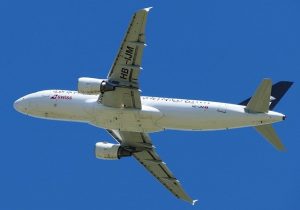 The A320 is a prolific lineup of narrow-body jets developed by Airbus. The European aerospace manufacturing company launched the A320 project back in the mid-1980s. In 1988, Air France became the first commercial airline to use an A320 jet in its fleet. While you may have seen or even flown on an A320 jet, though, there are probably some things you don’t know about them. Below are five fun facts about the A320 family.
The A320 is a prolific lineup of narrow-body jets developed by Airbus. The European aerospace manufacturing company launched the A320 project back in the mid-1980s. In 1988, Air France became the first commercial airline to use an A320 jet in its fleet. While you may have seen or even flown on an A320 jet, though, there are probably some things you don’t know about them. Below are five fun facts about the A320 family.
#1) Originally Known as the Joint European Transport (JET) Project
The A320 project was originally known as the Joint European Transport (JET) project. At the time, Airbus wanted to produce a new narrow-body jet that it could sell to commercial airlines. As a result, Airbus partnered with several other European organizations, including British Aerospace, Dornier and Fokker. Because it was a collaboration, it was referred to as the JET project. It wasn’t until 1981 when the project was renamed to the A320 project.
#2) Pioneered Fly-By-Wire Controls
Airbus pioneered fly-by-wire controls with its A320 family. The first A320 jet, in fact, didn’t have manual and mechanical controls in the cockpit. Rather, it had fly-by-wire controls. Fly-by-wire controls consist of digital displays and digital control mechanisms. While they first appeared in the A320, they’ve since found their way into other commercial jets.
#3) Highest-Selling Jet
You might be surprised to learn that the A320 is the highest-selling jet of all time. More A320s have been sold than all other jets, including jets manufactured by Airbus and its competitors. With that said, the A320 hasn’t always had this title. The Boeing 737 was once the highest-selling jet. In 2019, though, the A320 surpassed the Boeing 737 in terms of sales. The A320 is now considered to be the highest-selling jet of all time.
#4) A321 Was the First Variant
Like with all of its families, Airbus has designed and manufactured several variants of the A321. The first variant was the A321. Also known as the stretched A320, it lives up to its namesake by featuring a longer design than the original A320. The A321’s fuselage is nearly 23 feet longer than the original A320’s fuselage, thus allowing it to accommodate more passengers.
#5) Efficiency Enhancements
Airbus has made numerous modifications to its A321 family, many of which are designed to improve efficiency. In 2006, Airbus launched the A320E program. This program focused on making A320 jets more efficient. Airbus began using large winglets, for instance, to improve efficiency by 4% to 5%. It also made changes to the A320’s body to achieve a more aerodynamic shape and, thus, greater efficiency.



